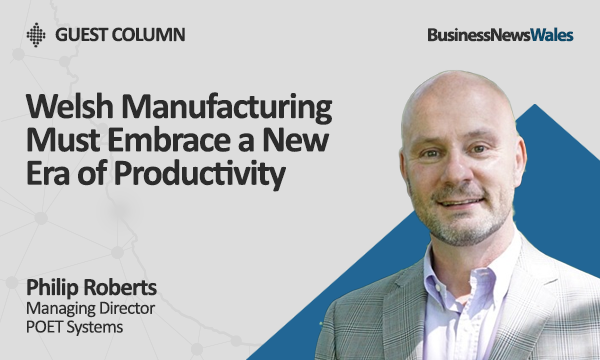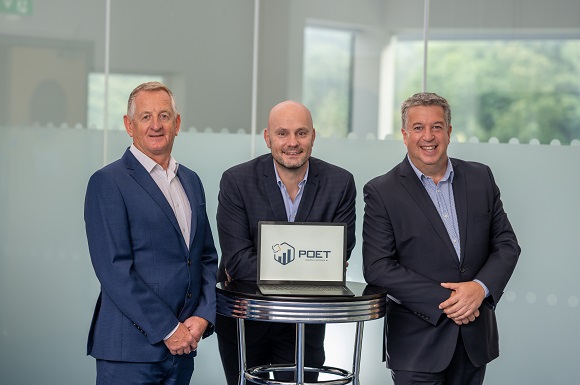Written by Lynn Davies, Director of Poet Systems.
As we slowly start to emerge from lockdown, thoughts are naturally turning to the economic recovery ahead.
Like all sectors, manufacturing in Wales has experienced mixed fortunes over the last year, with job cuts and business closures balanced out by promises of new investment.
Manufacturing still plays a vital role in Wales, worth more than £10.8 billion to the Welsh economy and employing more than 153,000 people in 2020, according to manufacturers’ organisation Make UK. The food and drink and chemical sectors are particularly strong.
The challenge for those manufacturing businesses that have managed to survive the turmoil of the last year will be twofold – first they will want to consolidate what they have and then they will want to look for new opportunities for growth.
Unfortunately, they will be operating under a uniquely difficult set of circumstances, with external factors like the pandemic, Brexit and climate change all having an impact on how they do business for the foreseeable future.
To survive in this new world and remain competitive, Welsh manufacturers will need to innovate.
They can no longer rely on doing things the way they have been done in the past, but instead must embrace new ways of working and new trends.
The most important of these trends is digitalisation. Digital transformation has long been a goal of many manufacturers, but for a whole host of reasons – cost, workforce issues, training needs etc. – the implementation of digital technology in manufacturing has been slow.
Now is the perfect time for that to change. Digitalisation can save money and time, reduce waste and drive efficiency, ultimately leading to increased productivity, profitability, competitiveness and stability.
Siemens Financial Services commissioned research into the benefits of digitalisation, and estimated that manufacturers could make production productivity gains equivalent to between 6.3% and 9.8% of their annual revenues by automating and digitising their production systems.
In Wales, this so-called ‘Digitalisation Productivity Bonus’ could be worth £2.1 billion to the economy, Siemens estimates.
It’s reassuring that the need for digitalisation is being recognised at the highest levels. In its action plan A Manufacturing Future for Wales, published earlier this year, the Welsh Government lists technological changes, including digitalisation and automation, among its priorities for the sector.
The plan says:
“Supporting companies to embrace digital and automation technologies, employing an Industry 4.0 approach, will create a more resilient manufacturing base and a more resilient Wales.
“By adopting innovative manufacturing technologies our businesses will be better equipped to be flexible in order to deal with high and low volumes and multiple product variants.”
However, manufacturers can’t afford to rest on their laurels and wait for the government to help – they have to invest in digitalisation themselves if they are to succeed.
We have a unique opportunity to transform manufacturing in Wales for generations to come by embracing digital and data.
Everybody is talking about the power and value of big data and how data can be harnessed not only to speed up processes and save money but also as a valuable commodity in and of itself.
Other sectors are actively embracing these innovations and reaping the rewards – just look at how fintech is disrupting the traditional models of financial services at all levels.
Using technology like artificial intelligence, big data and blockchain, an entire sector is being transformed, from high street banking right up to international trading.
So why can’t manufacturing do the same? Manufacturing has always been a confident and forward-thinking sector, especially here in Wales. We must harness those qualities now more than ever if we are to ensure our future is as successful as our past.
Digitalisation and data can be the key to both our short-term recovery and long-term growth, so let’s be confident and forward-thinking in our adoption of these new innovations.







